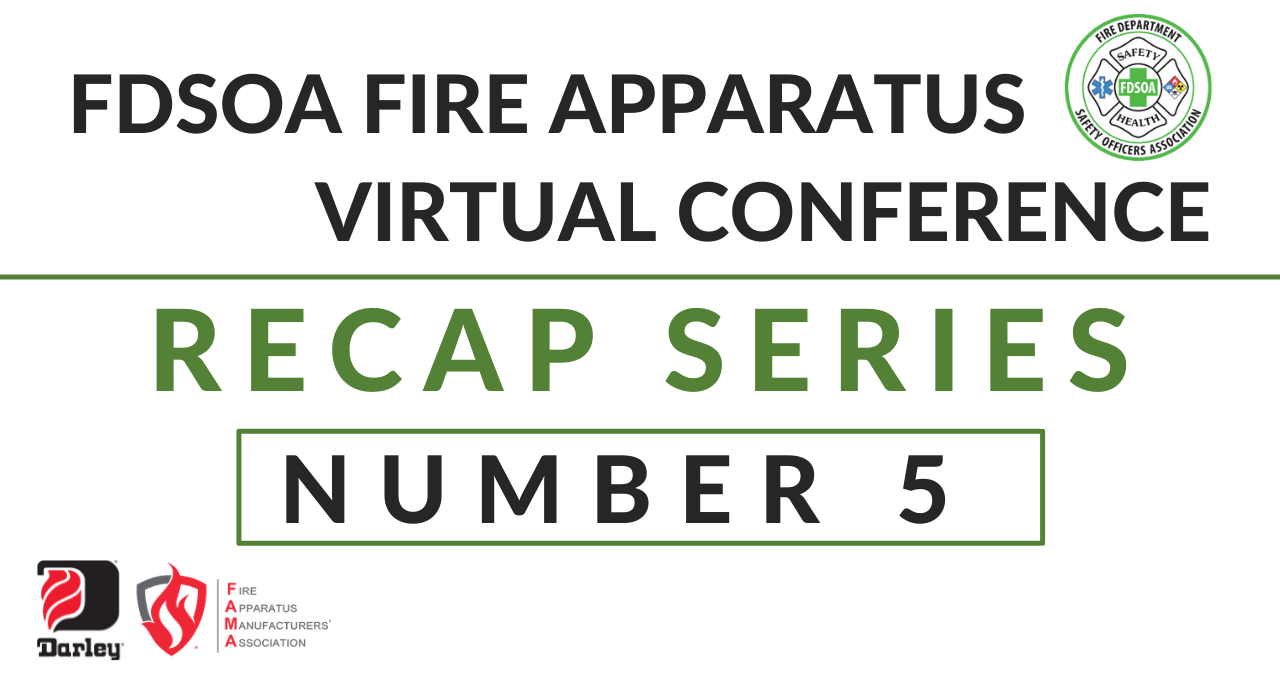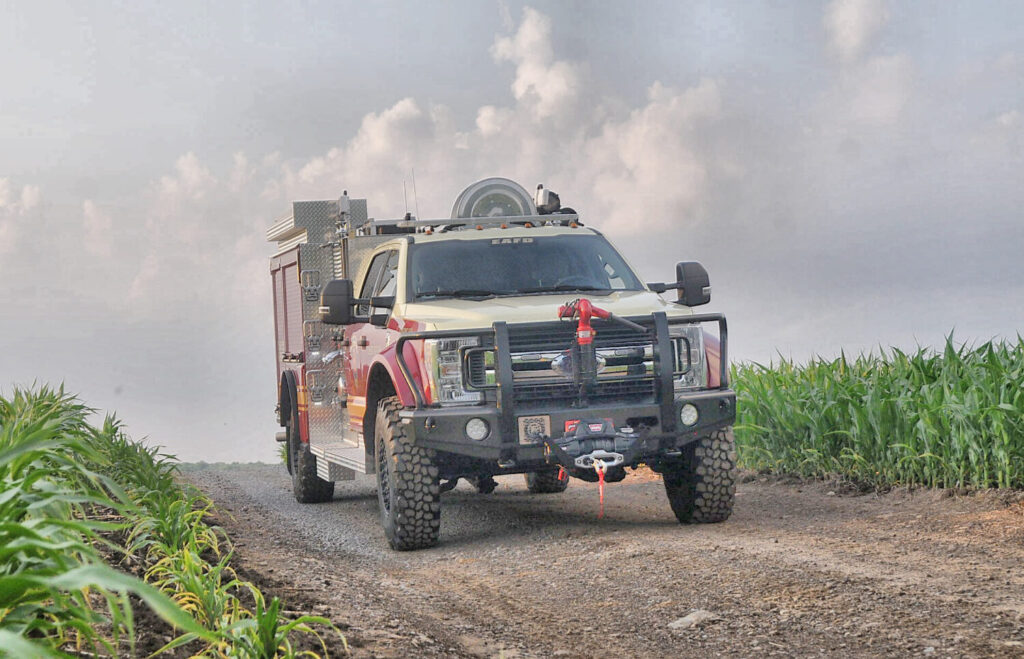
Mistakes are common during the fire apparatus procurement process, causing fire departments worldwide to overpay for change orders, overload trucks with equipment they are not designed to handle and consequently feel frustrated over the tedious, time consuming yet necessary undertaking. Tom Shand, who prepares bid specifications, bid reviews and conducts final inspections for the U.S. Navy Fire and Emergency Services; Ed Boring, the fleet sales manager for HME Ahrens-Fox; John Witt, the founder and leader of Safetek Emergency Vehicles Ltd. (Canada’s leading provider of fire and emergency vehicles, parts and service); Mike Wilbur, who is nationally recognized in emergency vehicle operations, apparatus placement and purchasing; and Jeff Gaskin, a fire apparatus mechanic who is certified by the Emergency Vehicle Technician Certification Commission in six different areas, joined the FDSOA Virtual Fire Apparatus Conference session What Can Go Wrong in Procurement? to dive deep into best practices customers can employ to expedite the apparatus procurement process while simultaneously gaining a well-rounded understanding of the truck itself.
Tom led the session, starting it off with the simple but important question, “What are customers’ expectations?” According to Jeff, fire departments hold “unrealistic expectations bred by social media,” since members see images of various designs online and want their truck to replicate a certain look but do not comprehend the many reasons why their specific truck may not be able to do so, which leaves them unsatisfied. Mike noted that another reason customers have unrealistic expectations is because they do not understand the specifications (also known as “specs”), or even try to read them. He, along with other panelists, often hears customers say, “I thought,” or, “I assumed,” and, “I guessed,” when confronted with their inaccurate orders since they did not “do their homework,” as Ed calls it. As explained by John, customers should read the stripper sheet spec–or the spec that only shows line items–for a complete review before the preconstruction (or “precon”) phase to expedite involved parties’ time. It would arm the customers with the knowledge that the order they are placing is correct, and therefore avoid change orders (and more costs) later on. The longer, one-hundred-plus-page spec is an expanded version of the stripper sheet spec that provides more detailed information; the stripper sheet offers all the relevant details that the customer needs, so the longer spec is not required for the procurement process.
Before entering the precon phase of the process, the fire department must form an apparatus committee, or a team of members of the department who work together to decide on an apparatus purchase. Mike recommended creating a team of five to seven individuals, while Jeff insisted that six is the magic number based on his experiences over the years. Both mentioned though, that the larger the committee, the more expensive the endeavor since every person wants a certain element and takes up too much time discussing such elements – as everyone knows, “time is money.” To avoid feeling like the committee is, “trying to shovel water against the tide,” as Mike described it, ensure fair and well-rounded skill set representation by including senior members (like an officer), those halfway through their career and younger members. Also included should be the in-house mechanic since he knows the last truck’s needs and failures. His input can help move the committee forward in a more fiscally responsible way. “I don’t tell the painter how to paint my house,” John emphasized. It is important for fire departments to involve younger members due to the evolving nature of firefighters themselves: back in the day, tradesmen typically became firefighters so they had an innate ability to handle apparatus; nowadays, younger generations are less in tune with handling such machinery and require more training, but still deserve a spot on the committee since they are the ones taking over the industry when those tradesmen from back in the day retire. “For them to not have a say,” Mike commented, “is really short-sighted.”
Aligning the apparatus committee to the same page on matters that truly count has become a major issue within the procurement process mainly because no one wants to spend the time that is needed for a quality precon. To address this issue, Jeff has initiated what he labeled as a “pre-precon” in which his team participates in a review of the truck via a sit down at the firehouse days before the precon occurs to aid in organizing efforts, needs and desires efficiently. During the sit down, Jeff’s team dives into explaining the specs on the current truck as well as forming the required new specs to send to the manufacturer outlining what the fire department wants, “not as much detail as going out to bid but certainly enough detail to avoid problems from the get go,” and to use as reference during contract signing and inspections. For example, the committee should list all the equipment that will be mounted in the vehicle so the total vehicle weight can be accurately calculated. Vehicle weight affects the foundational components of the apparatus and can be a costly oversight. Mike mentioned that over one-third of trucks evaluated each year are overweight because customers are not familiar with the industry standards and consequently do not realize they asked for something that goes against the standards. The one-third of trucks each year that do not pass inspection require multiple change orders for brakes, springs, tires, etc., costing the fire departments tons more money, “because they’re not being smart.”
According to Mike, “If it’s not in writing, it’s not going to happen, and the customer won’t get it – and that’s the bottom line. And as a customer, you have every right to refuse the truck as long as you tell the manufacturer the correct information.” Accurate, detailed specs can also curb the “he said, she said” conflicts between the fire department and manufacturer down the line since Ed noted that specs are typically attached to the contract. “Good documentation on the front side could reduce [conflict],” he added. “It falls on the apparatus committee. So if they didn’t do the work and don’t know what they’re getting then…” John recommends that the committee stops by the firehouse during a quiet time, walk around the current truck with a pen and notepad and list any and all equipment being carried. Then ask the following hard questions: 1) What is on the truck that has not been used in a while? 2) Does all the equipment really need to be carried? Jeff added that these questions help the committee make better predictions since they can understand “the mission of the apparatus, its usage and the true life expectancy,” or how long before the apparatus is worn and unreliable. Determining the true life cycle is essential in predicting “the useful life relative to the parts on it.” In other words, knowing which parts can be replaced by technology down the road allows for more accurate planning.
Continuing with John’s recommendations, next review the department’s equipment wish-list to find out what will be added to the truck’s weight within the next couple of years. The key is to leave a 10-15% leeway for future equipment as a “balancing act for real world considerations with operational considerations that leaves a path” for the department to grow. Jeff additionally recommended using city administrators as a resource. City administrators can help departments find comparable cities–or “sister cities”–in effort to discover how things like compensation, equipment usage and purchasing behaviors are employed elsewhere, which can serve as a guide for the department’s decision-making. It’s interesting to note that, “nationally, organizations are struggling to find the money they need and are using their own data to validate why they need to keep buying the same fire engine, but sometimes data is wonderful and sometimes not so much.” The ability for departments in different locations to bounce ideas off each other not only provides ammunition for and security in choices, but it offers vision into other departments and insights into what is working and not working elsewhere–information departments can use to adapt for the better.
COVID-19, of course, has altered the way precons are conducted: everything is now virtual, so hands never even touch the truck and customers cannot compare or test themselves. The classic issues with virtual communicating are clearly evident; For example, bad camera angles trick the eye into thinking something is placed correctly when it is not, causing manufacturers to miss details here and there. The inability to travel has removed the financial cost of precons, and it has shortened the time they take to complete since committee members have a set amount of time to make decisions. Tom believes virtual precons help show the truck’s layout in real time and even show mock-ups so departments are not surprised when their vehicle is delivered. Ed agreed that mock-ups aid in understanding yet added that more information should be sent to the departments even further in advance of their meeting in conjunction with their sales rep or engineer gaining further clarification by asking the customer the why and the what behind their choices. It is the responsibility of the customer to ask questions, pay attention to the details and choose a vendor that facilitates support after the sale to ensure a long-term resource.
The Virtual Fire Apparatus Conference was held on May 18 and 19, 2021, and involved over twenty-five experts who spoke about topics from safety to COVID-19 to emissions. If you were unable to attend, head to FDSOA’s YouTube Channel to watch the sessions available. You can also join FDSOA next year at the Annual Fire Apparatus & Health and Safety Conference on January 9 – 13, 2022, in Scottsdale, Arizona.
To view more posts in this series, click here.




